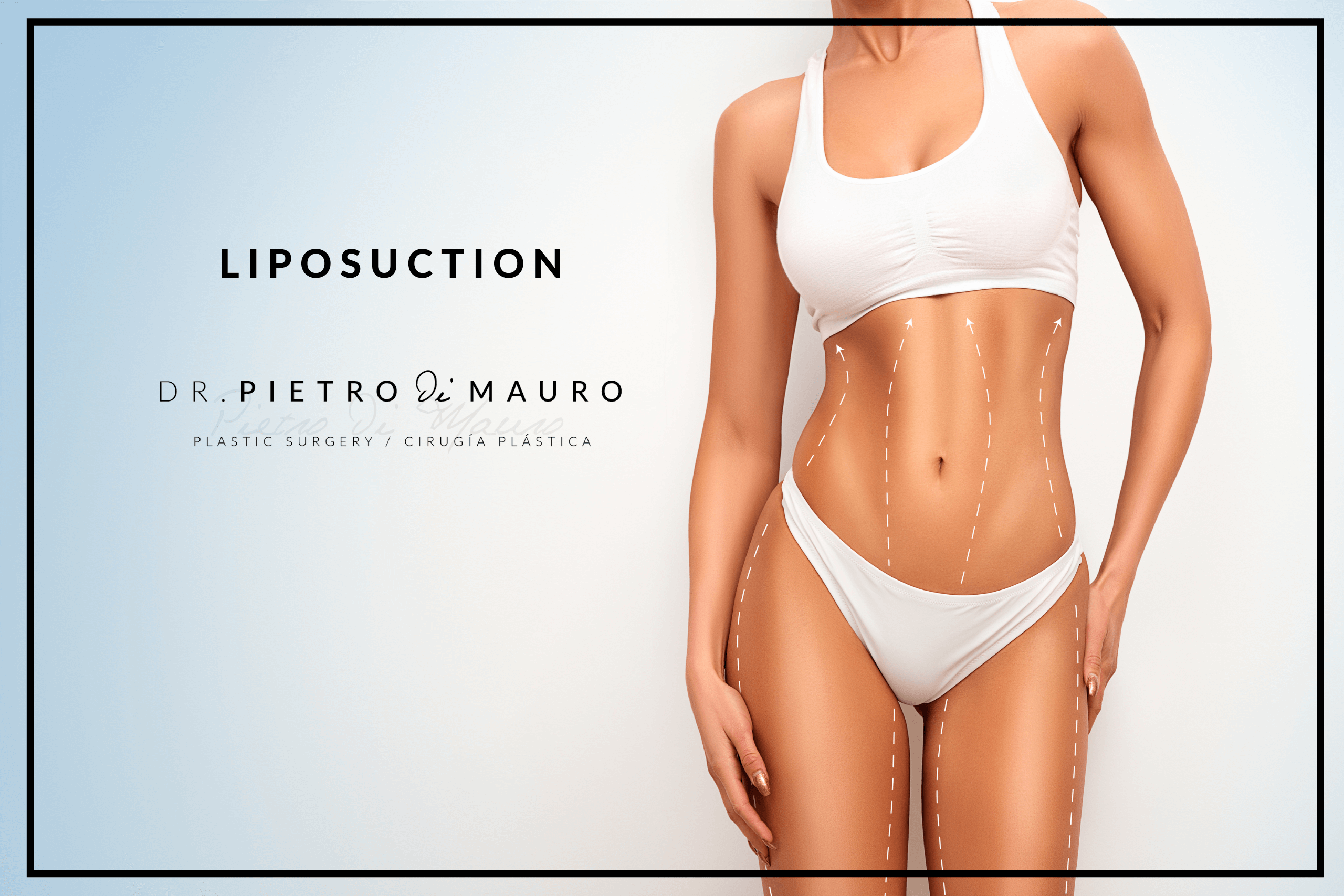Liposuction procedure explained
If you’re considering undergoing a cosmetic surgery procedure, such as liposuction, it’s important to find out as much information as possible, so that you don’t have unrealistic expectations.
One of the most experienced Marbella cosmetic surgery experts, Dr. Pietro di Mauro, always stresses to potential patients that it is a common misconception that when undergoing liposuction that the fat will not return. It’s important to understand that although the fat has been sucked out, if eating habits or exercise patterns lead to weight gain, then the fat can sometimes return in a different place.
In simple terms, to ensure that liposuction results are permanent, it is necessary to maintain a healthy lifestyle and not to confuse the results of liposuction as an alternative to exercise or a nutritious diet. Here is a step-by-step guide to explain how liposuction works.
Why do we have stubborn areas of fat?
Although it is correct to assume that the human body has a finite amount of fats cells and they can change shape and size in relation to the amount of weight we gain or lose. The distribution of the fat cells is predetermined before we reach maturity, this is why we have stubborn pockets of fat that just don’t want to go even when we lose weight elsewhere.
Removing fat pockets
Liposuction is the perfect procedure for removing fat in these stubborn areas. Once the fat has been removed it has gone forever, improving the body’s silhouette. That said, not all fat cells are removed from the treated area, which means that if you gain weight the remaining fat cells can grow larger. However, there will be fewer cells remaining and in general they will remain in proportion to the rest of the body.
Healthy lifestyle, exercise
Liposuction is not a magic fix that will allow unrestricted eating and an unhealthy lifestyle. The only way to guarantee the new improved contours last forever is to remain active, exercise and eat healthily. In the event of weight gain, any parts of the body that have not been treated with liposuction will have more fat cells and as a result may suddenly become bigger.
Research published in the Journal of Clinical Endocrinology and Metabolism has shown that normal healthy women who underwent liposuction to remove around three pounds of fat and who regularly exercise, retained their new smoother contours long term. Whereas, of the women in the same study who were inactive, over half had regained fat within six months.
Who is a good candidate for liposuction?
As touched upon above, patients who have stubborn areas of fat that cannot be removed by exercise or diet, who are within 30% of their ideal body weight. As with any medical procedure, a positive mental attitude and realistic expectations are key attributes. Ideally candidates should not smoke and will be in relatively good health, with good skin elasticity and muscle tone. Patients who have recently lost a lot of weight whose skin hangs loosely will not have the required elasticity, and liposuction would acerbate the situation.
Would a tummy tuck or body lift be more suitable?
Overweight or obese patients carrying over 50 pounds of excess weight should not consider liposuction. Normally the maximum amount of fat removed during liposuction procedures is 10 pounds. Removing in excess of 10 pounds poses the risk of irregular contours, dimpled skin and safety risks.
Liposuction should be viewed more of a method of balancing the body’s contours and improving the shape, as opposed to a weight loss procedure. Patients who wish to remove fat and / or have excessive loose skin, could benefit from a tummy tuck or body lift. Read our blog where Dr. Pietro di Mauro explains the difference between a Liposuction, Lipo Vaser and Abdominoplasty.
What are the steps in a liposuction procedure?
After an in-depth consultation with Dr. di Mauro to establish your expectations and suitability, on the day of your operation you will arrive at the clinic ready to be prepped for the procedure.
After an in-depth consultation with Dr. di Mauro to establish your expectations and suitability, on the day of your operation you will arrive at the clinic ready to be prepped for the procedure.
Pre op preparation
- Photos will be taken and the areas to be treated will be marked clearly on your body.
- The necessary IV lines and monitors will be attached.
- Some procedures require general anaesthetic which will put you asleep for the duration of the operation, alternatively you may require only local anaesthetic and intravenous sedation.
The procedure
Liposuction is carried via very small incisions made by the surgeon in order to suction the fat via small hollow tubes called a cannula and drained through tubes into a container. The incisions are usually made in inobtrusive areas of the body where natural folds occur, these will be closed with surgical sutures, and in some cases, it may be necessary for a drain to remain inserted to collect any excess fluid.
Recovery
After the liposuction it is important that you wear special compression bandages for at least 2 weeks. This is to avoid any retention of fluid and promote skin tightening around the new slimmer contour. After which gentler compression garments should be worn for around 10 weeks.
Dr. di Mauro provides patients with a personal post-operative plan. Generally, it is possible to go home after a few hours (but you will need to arrange someone to drive you). It will be necessary to wear a compression garment for at least 2 weeks to avoid any fluid retention, manage post-operative swelling and to avoid folds occurring. After removal, a gentler compression garment will need to worn for a further 8 weeks. After 2 or 3 days you may be able to return to work and resume gentle exercise.
It’s important to understand that there are a number of different methods of liposuction, including suction and ultrasound, yet the success of the procedure is dependent upon the skill and experience of your surgeon.
If you would like to know more about Dr di Mauro’s surgical techniques, experience and procedures, call 648 43 45 93 for a confidential no-obligation consultation.


